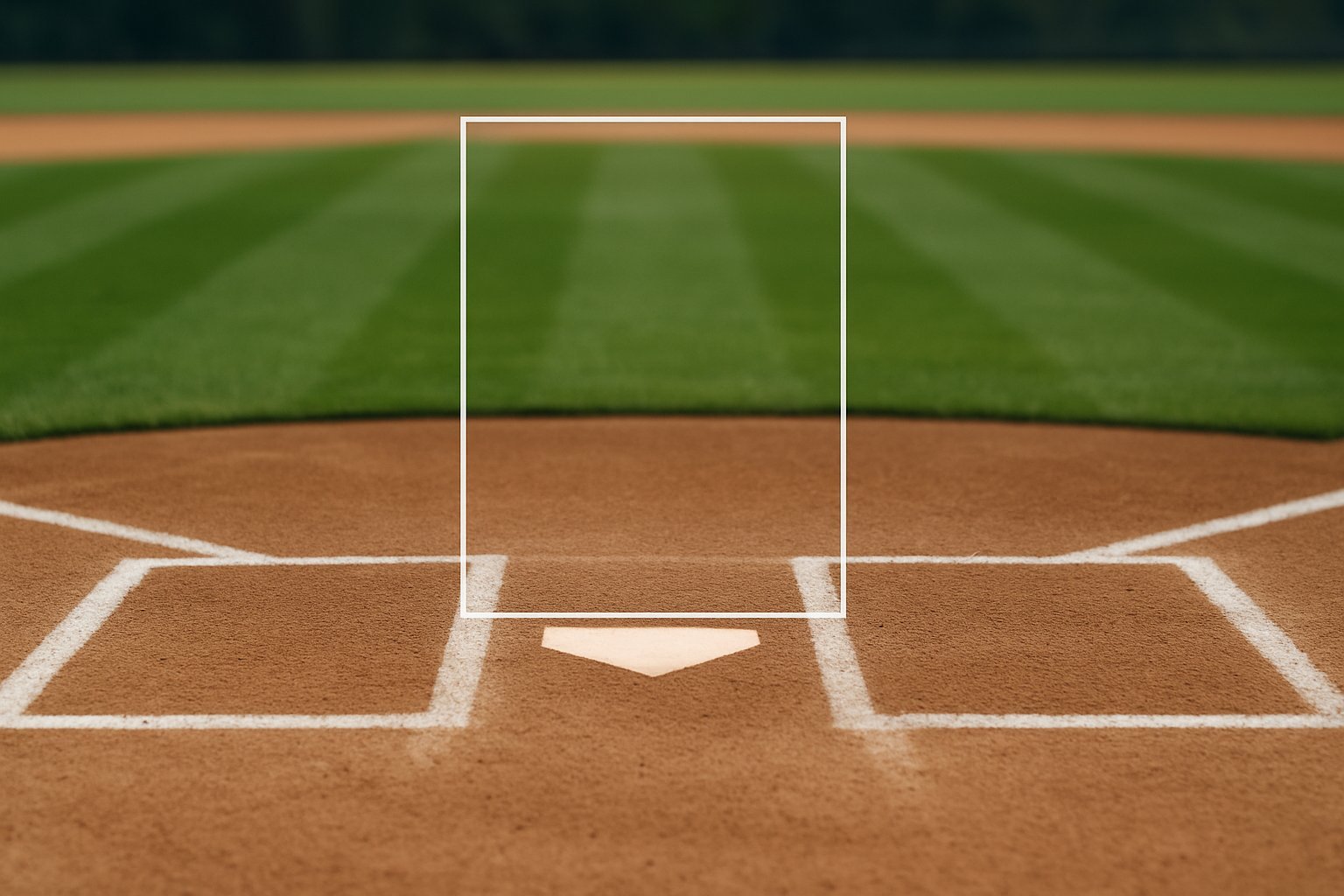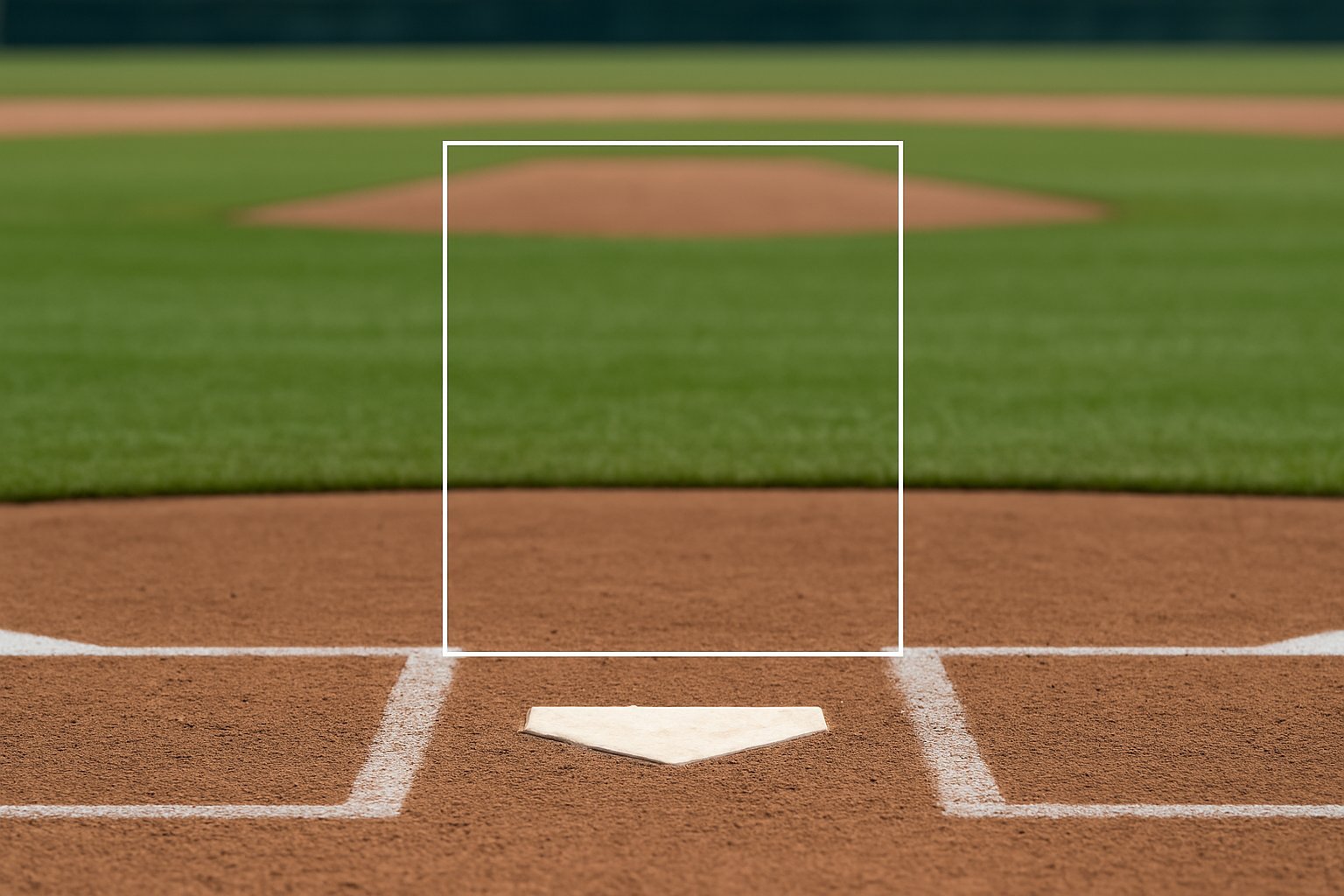The strike zone in baseball plays a huge role in deciding if a pitch is a strike or a ball. You’ll find it right above home plate, matching the plate’s 17-inch width and running from just below the batter’s kneecaps up to a spot halfway between their shoulders and the top of their pants.
This zone isn’t the same for everyone.
It shifts a bit depending on each batter’s stance and height, so every player gets a slightly different strike zone.
Umpires use the strike zone to make quick calls all game long.
Since no two batters stand exactly alike or share the same height, the zone’s height changes but the width always stays at 17 inches.
If you know the strike zone’s dimensions, it’s easier to see just how much skill it takes for pitchers, hitters, and umpires to do their jobs.
Understanding the zone also helps clear up those confusing moments when a pitch is called a strike or a ball.
While the idea is simple, actually calling it in the moment can get tricky.
That’s why the strike zone matters so much in baseball strategy.
Key Takeaways
- The strike zone always matches the width of home plate and changes in height for each batter.
- Umpires judge the zone on the fly, based on the batter’s stance.
- The zone’s size can impact big moments in any baseball game.
Official Strike-Zone Dimensions

The strike zone is a core part of baseball rules.
Its official measurements for height and width depend on how each batter stands.
The zone always lines up with home plate, and over the years, MLB and Little League have updated the rules to tweak its size.
Height and Width Measurements
The strike zone is always as wide as home plate—so, 17 inches.
That width never changes, no matter who’s batting.
The height is another story.
It runs from halfway between a batter’s shoulders and the top of their pants, down to just below their knees.
Because every batter stands a little differently, the zone’s height changes from player to player.
This makes things interesting for umpires, who have to adjust on the spot.
For a pitch to count as a strike (if the batter doesn’t swing), the ball has to pass through this invisible, three-dimensional box.
Relation to Home Plate
Home plate anchors the strike zone.
The zone covers the full 17-inch width, right from one edge to the other.
The ball doesn’t have to be fully inside the box—a pitch counts as a strike if any part of the ball crosses into the zone above the plate.
Pitchers try to aim right over this space, and batters have to guess whether the pitch will be called a strike or a ball.
The strike zone is basically an invisible box floating above the plate for every pitch.
Changes in Regulations Over Time
Baseball’s rules for the strike zone have changed a lot over the years.
Early on, the definition was pretty vague, but now MLB and Little League spell out the measurements in detail.
Lately, people have talked about creating a “universal strike zone” to keep calls more consistent.
Technology is starting to play a bigger part, with systems tracking the ball and helping with calls.
If you want to see more about the measurements or gear, check out baseball equipment solutions.
Factors Affecting the Strike Zone

The strike zone can shift depending on things like the umpire’s view, the batter’s position, and even what’s happening in the game.
These factors shape how the strike zone gets called and how the game plays out.
Umpire Interpretation
Umpires have their own way of seeing the strike zone.
One umpire might call the edges a bit tighter or looser than another.
They have to decide, in real time, if the ball crossed over home plate within the vertical limits—from the batter’s knees up to the armpits.
That width always stays at 17 inches.
But since these calls are judgment-based, you’ll see two umpires call the same pitch differently.
That can change counts, lead to walks or outs, and even swing the score.
Impact of Knees and Batter’s Stance
The strike zone’s height depends on the batter’s body position.
The bottom usually sits at the top of the knees, and the top is near the armpits (or the bottom of the sternum if you’re watching college ball).
When a batter crouches or tweaks their stance, the zone shifts vertically.
If they bend lower, the strike zone shrinks.
The stance doesn’t mess with the width, though.
The zone always stretches across the plate, so pitchers still have to throw over that same 17-inch space.
Role During the Game
The strike zone’s consistency can change the pace and style of a game.
If the umpire calls a tight zone, you’ll probably see more balls and walks.
If the zone’s bigger, there’ll be more strikes and quicker outs.
Sometimes, umpires tweak the zone a bit depending on the game’s situation.
Late innings, runners on base, or two outs might make them call it a little differently to keep things moving.
Pitchers aim for the strike zone to rack up strikes, but the size depends on the batter’s stance, umpire’s call, and what’s going on in the game.
That has a big effect on pitch strategies.
If you want to know more about how umpires handle the strike zone, check out The Strike Zone and the Umpires That Control It.
Frequently Asked Questions
The strike zone always has a set width, but the height changes with the batter.
Its size can shift during a game, and you’ll often see it on TV as a box over the plate.
Recent rule tweaks have changed how it’s measured and enforced.
What are the official dimensions of the baseball strike zone?
The strike zone matches home plate’s width—so, 17 inches.
The height runs from halfway between the batter’s shoulders and the top of their pants down to the bottom of their knees.
How do you measure the width of the strike zone?
The width always matches home plate: 17 inches.
That’s the horizontal limit for every batter.
What determines the height of a player’s strike zone?
The batter’s stance and size set the height.
It starts at the midpoint between their shoulders and the top of their pants, and ends at their knees.
Can the strike zone’s size change during a game?
Yes, it can.
The zone shifts a bit if the batter changes their stance or position.
Umpires might also see it differently depending on the situation.
How is the strike zone depicted in televised baseball games?
You’ll see a colored box over home plate on TV.
That box adjusts in real time to fit the batter’s height and stance.
What has changed about the strike zone’s dimensions in recent years?
People have started pushing for more consistent and accurate strike zone calls.
Umpires now use advanced tracking technology to call strikes closer to the official zone.
If you’re curious, you can check out more details at Baseball Strike Zone Dimensions & Drawings.
